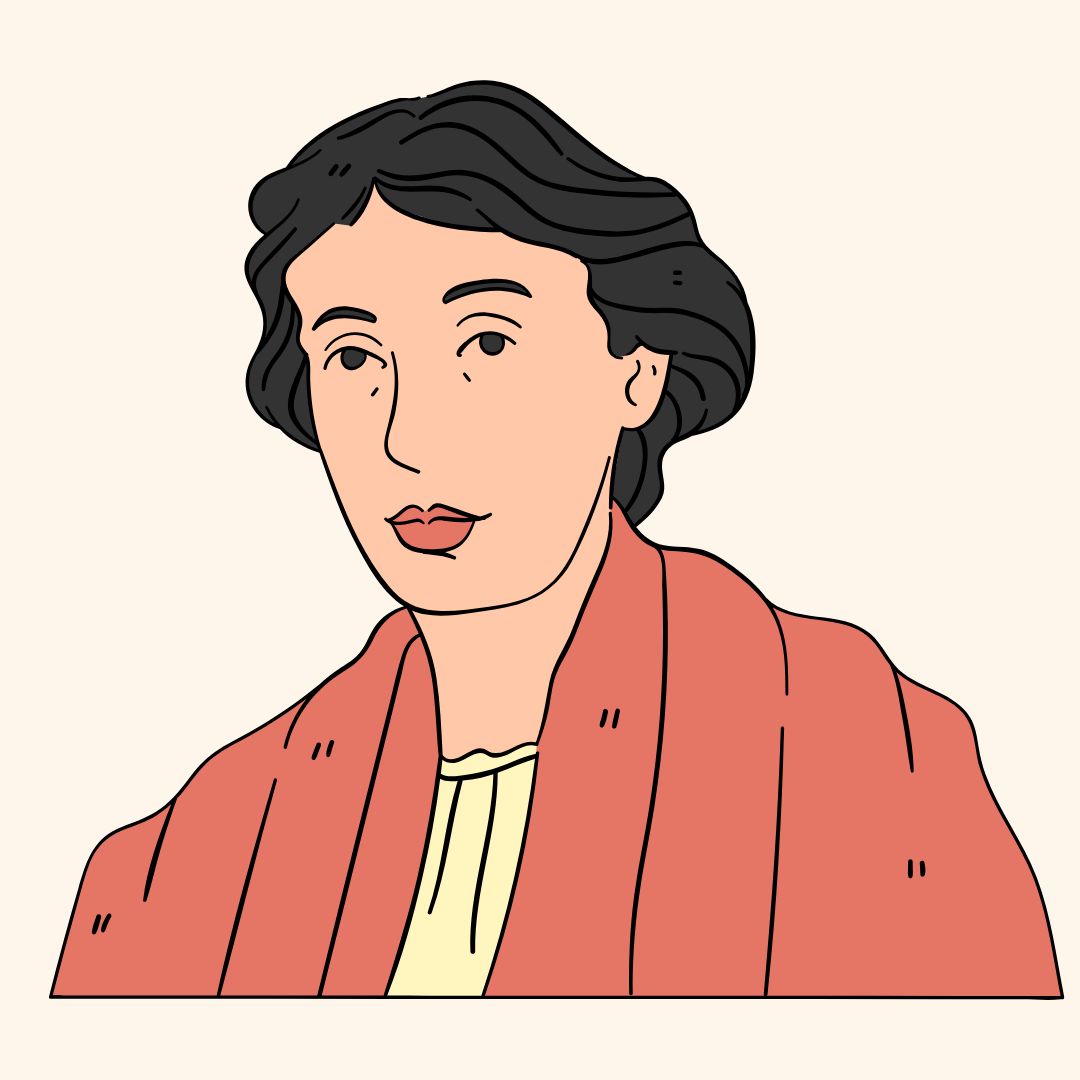
A Revolutionary Voice in Literature ✨📚
When you think of literary modernism, one name shines brighter than most: Virginia Woolf. A pioneer of the early 20th century, Woolf didn’t just write novels—she reshaped the very way stories could be told. Her bold experiments with language, time, and consciousness challenged old conventions and gave voice to a new era.
But who was Virginia Woolf? How did her work embody the spirit of modernism? And why does her writing still matter today?
In this article, we'll explore:
- Who Virginia Woolf was 🧠
- What literary modernism means ✍️
- How Woolf's writing defined the movement 🔥
- Her most important works and ideas 📖
- Her lasting legacy and influence 🎓
Let’s dive deep into the life and genius of one of the most important writers of the 20th century.
Who Was Virginia Woolf? 🧑🎓
Virginia Woolf (1882–1941) was an English novelist, essayist, and critic. Born Adeline Virginia Stephen in London, she grew up in an intellectually rich household. Her father, Sir Leslie Stephen, was a literary scholar and editor, which meant young Virginia was surrounded by books, writers, and ideas from an early age.
Despite struggling with mental health issues throughout her life, Woolf became a central figure in the Bloomsbury Group, an influential circle of writers, artists, and thinkers that included E.M. Forster, John Maynard Keynes, and her husband, Leonard Woolf.
Woolf’s writing wasn’t just about stories—it was about breaking down barriers: between thought and language, between past and present, between men and women.
What Is Literary Modernism? 🧩
To understand Woolf, we need to understand modernism.
Modernism was a cultural and artistic movement that emerged in the late 19th and early 20th centuries. It was a response to the massive changes happening in the world: industrialization, urbanization, world wars, and a growing sense of alienation and disillusionment.
In literature, modernism rejected:
- Traditional plot structures 🛑
- Omniscient narrators 👁
- Linear time and chronological storytelling ⏱
Instead, it embraced:
- Stream of consciousness 🧠
- Subjectivity and inner life
- Fragmentation and ambiguity
- Symbolism and experimentation
Writers like James Joyce, T.S. Eliot, and Marcel Proust were at the forefront of this shift. And so was Virginia Woolf.
How Did Virginia Woolf Shape Modernism? 🎨
Woolf didn’t just follow the modernist trend—she defined it in her own style. Her focus was not on external events, but on the internal experiences of her characters. She once wrote:
“The proper stuff of fiction is a little loop of consciousness, a ‘psychological pattern’.”
Let’s look at how her work embodied the core themes of modernism:
1. Stream of Consciousness 🧠
This technique tries to capture the flow of a character’s thoughts, feelings, and impressions in real-time. Woolf mastered this style in works like:
- "Mrs Dalloway" (1925): One day in London. That’s all it takes. But through the eyes of Clarissa Dalloway and others, we experience memory, trauma, identity, and the aftershocks of war.
- "To the Lighthouse" (1927): A novel where time bends and memories drift like waves. The focus isn’t on plot but on how people perceive and interpret reality.
Woolf used language like a painter uses color—building impressions, emotions, and moods rather than concrete facts.
2. Subjectivity and Time ⌛
Woolf wasn’t interested in telling stories in straight lines. Instead, she showed how time feels. In To the Lighthouse, for instance, time speeds up in the middle section ("Time Passes"), capturing a decade of change in just a few pages.
She explored how people live not just in the present, but in their memories, anticipations, and reflections.
3. Feminism and Identity 👩🎓
Woolf is also celebrated as an early feminist thinker. In her famous essay "A Room of One’s Own" (1929), she argued that:
“A woman must have money and a room of her own if she is to write fiction.”
She challenged the male-dominated literary world and highlighted the lack of opportunities for women writers. Woolf envisioned a world where women could freely express themselves and tell their stories.
Key Works of Virginia Woolf 📚
Here are some of her most important books, each a masterpiece in its own right:
🟣 "Mrs Dalloway" (1925)
Takes place in a single day in London, following Clarissa Dalloway as she prepares for a party. But it also enters the mind of Septimus Warren Smith, a veteran haunted by PTSD. A stunning portrait of post-war trauma, social expectations, and the passage of time.
🟢 "To the Lighthouse" (1927)
A novel about a family's holiday and their attempts to visit a lighthouse. But it's really about memory, loss, and the shifting nature of perception. One of Woolf’s most emotionally resonant works.
🔵 "Orlando" (1928)
A playful, time-traveling biography of a character who changes sex and lives for centuries. It explores gender, identity, and history with wit and creativity. Inspired by Woolf’s close friend and lover, Vita Sackville-West.
🟠 "A Room of One’s Own" (1929)
Not a novel, but an extended essay. Here, Woolf reflects on the struggles women face in literature and life. It’s an essential feminist text that continues to inspire writers and thinkers today.
🔴 "The Waves" (1931)
Perhaps her most experimental novel, told through the soliloquies of six characters from childhood to old age. The prose reads like poetry, blurring the line between narration and thought.
Virginia Woolf's Legacy 🌍
Woolf changed the rules of fiction. She showed that the inner life—the stream of consciousness—could be just as compelling as action or drama.
Her work influenced countless writers, including:
- Margaret Atwood
- Toni Morrison
- Ali Smith
- Zadie Smith
- Ian McEwan
Beyond literature, her impact reaches feminism, psychology, philosophy, and even film and art.
She also helped shape modern literary criticism, through essays like Modern Fiction, where she criticized authors like H.G. Wells for being too concerned with external reality, not with the soul.
Woolf died in 1941, taking her own life after a long battle with mental illness. But her voice lives on, bold and unmistakable.
Why Virginia Woolf Still Matters Today 💬
More than 80 years after her death, Woolf feels more relevant than ever. Why?
- Her focus on mental health speaks powerfully today.
- Her feminist vision continues to inspire new generations of women.
- Her experimental style encourages writers to be bold and break rules.
- Her questioning of identity, time, and reality aligns with contemporary themes in postmodern literature and media.
In an age of constant noise and distraction, Woolf reminds us of the richness of inner life, the depth of quiet moments, and the power of thought.
✨ Final Thoughts
Virginia Woolf didn’t just write books. She transformed literature.
By daring to go inward, to dwell in moments, to challenge the status quo, Woolf helped shape modernism—and modern thinking itself. She asked us not just to read, but to feel, to reflect, and to imagine what stories could be.
Whether you're a literature student, a casual reader, or a lifelong fan, Woolf’s work opens doors to a deeper, more profound understanding of what it means to be human.
🖋️ As Woolf once said:
“Books are the mirrors of the soul.”
And hers reflect a soul both brilliant and brave.
✅ FAQs About Virginia Woolf and Modernism
Was Virginia Woolf the first modernist writer?
Not exactly. Modernism developed in the late 19th century with writers like Joseph Conrad and Henry James. But Woolf was one of its most important voices in English literature.
Is "Mrs Dalloway" hard to read?
It can be challenging because of its stream-of-consciousness style, but it's also deeply rewarding. Patience pays off!
Why is "A Room of One’s Own" important?
It’s a foundational feminist text that argues for women's creative independence and access to education and financial freedom.
What themes did Woolf explore?
Time, memory, gender, mental health, perception, consciousness, and the human condition.
📚 References and Further Reading
- Lee, Hermione. Virginia Woolf. Vintage, 1997.
- Goldman, Jane. The Feminist Aesthetics of Virginia Woolf. Cambridge University Press, 1998.
- Marcus, Jane. Virginia Woolf and the Languages of Patriarchy. Indiana University Press, 1987.
- Modernist Archives Publishing Project (MAPP)
- The British Library: Virginia Woolf Collection

